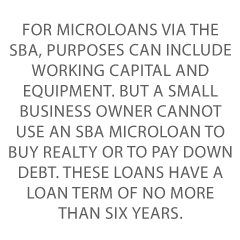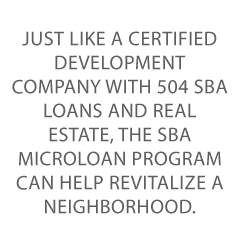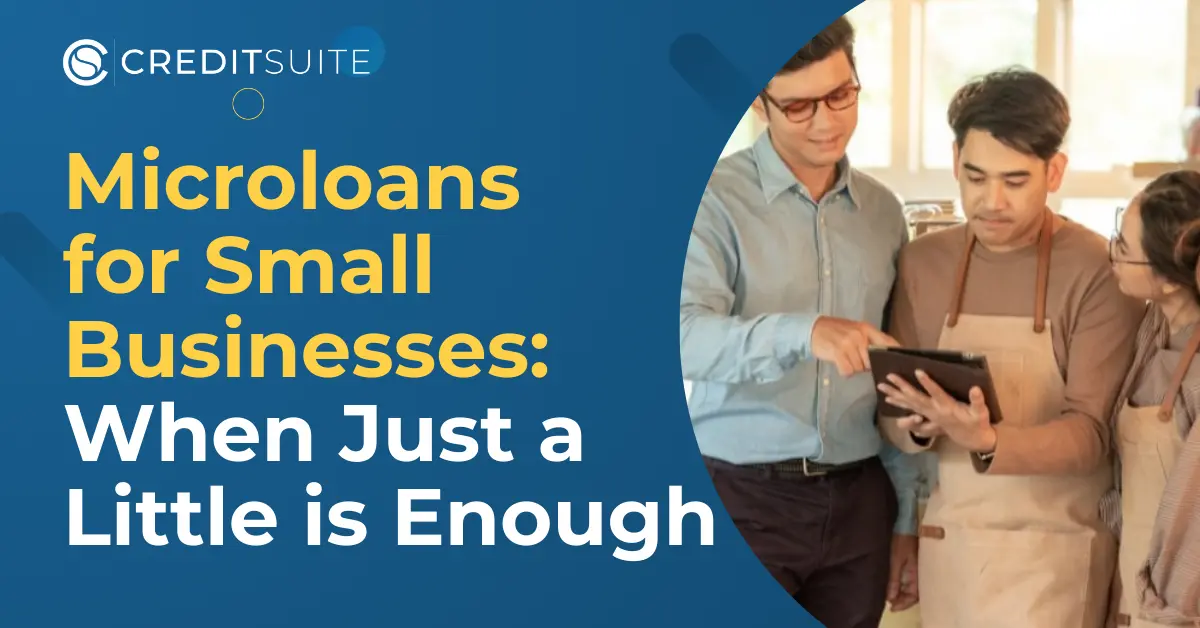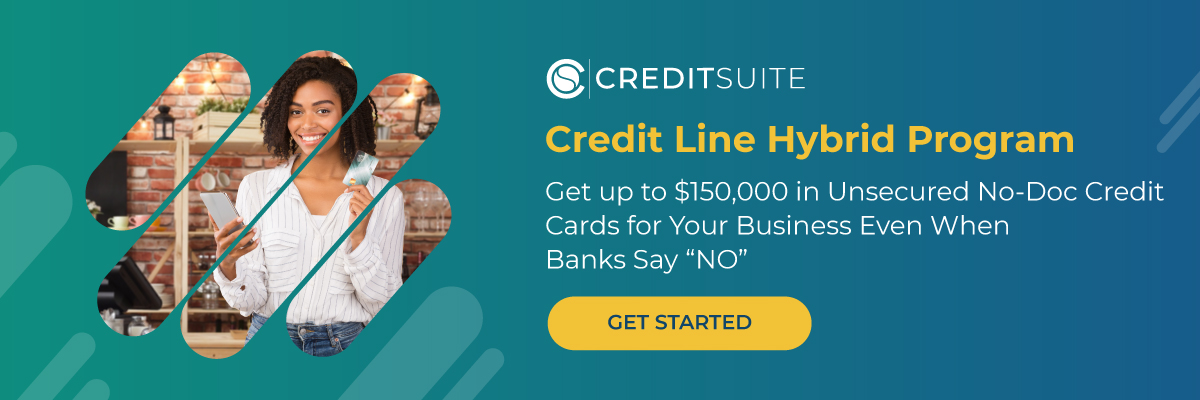Microloans for small businesses are a great lending product, and they work well for startups, too! Since they’re mainly secured by the SBA, you can get access to up to $50,000 with great rates, low fees, and easier qualifications.
So let’s explore the microloan and see if it’s a great option to fund your business!
What is a Microloan?
As you might imagine, a microloan is a small loan for a business. The maximum loan amount is generally $50,000. The SBA provides microloans via specially designated intermediary lenders in a community development financial institution.
These are nonprofit community-based organizations with experience in lending as well as management and technical assistance. These are organizations that will act as intermediary lenders for the SBA loan.
 For microloans via the SBA, purposes can include working capital and equipment. But a small business owner cannot use an SBA microloan to buy realty or to pay down debt. These loans have a loan term of no more than six years.
For microloans via the SBA, purposes can include working capital and equipment. But a small business owner cannot use an SBA microloan to buy realty or to pay down debt. These loans have a loan term of no more than six years.
While the Small Business Administration is not the only provider of microloans, there are only maybe a total of 400 financial institutions which provide them in the United States.
Non-SBA providers will tend to charge 12 – 15% interest. These loans tend to be for getting a small business going. As a kind of starter loan, this kind of lending is easier to get than a term loan from a traditional lender.
Also, because these are easier to qualify for than loans from traditional lenders, microloans tend to help a small business where the owner has been turned down for funding elsewhere.
How Does a Microloan Work?
Providers working with the SBA will have different qualifications. As will other lenders. But for this type of business loan, some things are constants.
You will need to have a business plan. If you have tried and have already been turned down by a traditional bank, then it’s likely that you have already completed this step. It shows your commitment to the business and helps assure lenders.
Your business plan shows how you will go from the startup phase to becoming a profitable business. It should include how your company will make money, which goods or services the business will deal in, how you will attract new customers, etc.
It is also a very good idea to improve your business and personal credit. While you can probably still get a microloan even if you have a less-than-stellar credit history, better personal credit will help you get better terms and more money.
Showing that you and your business can pay off any credit card debt will go a long way to assuring lenders that you will pay back a microloan. So, check your credit score for both personal and business credit.
If your credit score could stand to be improved, try to do so before you apply. A poor credit score will harm your chances of getting even a microloan.
Types of Microloans:
While the SBA isn’t the only game in town, they are a large player in this space.
Type 1 – SBA Microloans
The SBA is the largest and most popular provider of microloans. But the SBA does not actually lend money. Rather, they work with intermediaries. Since the SBA can shoulder some of the risks, even a traditional lender may be more inclined to approve a microloan.
To be allowed to work with the SBA, the intermediary must:
- Be either a private nonprofit, quasi-public, or tribally-owned entity
- Have one year or more of experience directly issuing and servicing microloans
- Have at least one year of experience providing in-house marketing, management, and technical assistance to its micro-level borrowers
The SBA does place a restriction on the use of the loan funds. You cannot use the money to pay down debt or to purchase real estate. But you can use it for working capital, to buy inventory or equipment, and to get by in the off-season if yours is a seasonal business.
You can get up to $50,000. In general, the SBA provides $13,000 for each microloan. Most of the microloans which come from the SBA must be paid back within six years.
The United States Treasury sets the interest rate for SBA microloans. But the interest rate for such a business loan tends to average between 8 – 13%.
Type 2 – Microloans Directly from Nonprofits
There are nonprofit organizations that serve only a segment of the country or the population, and it pays to investigate whether they provide microloans.
For example, Grameen America provides microloans for women who live in poverty. A first-time business loan can be for no more than $2,000. Grameen requires that you live near one of their bank branches. You also need to be developing a small business with four other women.
Further, Grameen puts you through training, and they require you to commit to paying them back every week. You will not need to have good credit, put up collateral, or prove business income.
Their geographical requirement means women in only 12 states are eligible.
Accompany Capital is another nonprofit provider, but your small business must be within the five boroughs of New York City. Also, you will need to prove positive cash flow, but their business loans are not limited to just women.
Another nonprofit financing option is Kiva. They crowdsource most of the money for their microloans, which they provide to any kind of small business in 70 countries. They loan up to $15,000 at 0% interest. Borrowers must enlist family and friends to help crowdfund the microloan.
Type 3 – Pursuit and the USDA
Pursuit provides both SBA microloans and its own microloans (SmartLoans). The Pursuit option can go up to $100,000, with an interest rate capped at 11.9%. But qualifying for a SmartLoan is tougher.
Requirements for a SmartLoan include:
- Being in business for at least two years
- Annual revenue of over $200,000
- Having a FICO score of at least 640
- No prior personal or business bankruptcies
Pursuit encourages even entrepreneurs who feel they won’t qualify to apply anyway, as they will either suggest a different small business loan or work with the small business to help it qualify in the future.
At the USDA, small business owners of farms can get up to $50,000 to:
- Make a down payment on a farm
- Build, repair, or improve farm buildings, service buildings, farm dwellings, etc
- Start soil and water conservation projects
- Use as a Down Payment Farm Ownership Loan
- Use for joint financing
They also offer microloans for farm operations, such as buying fences, pasteurization equipment, and even livestock.
A USDA Direct Ownership Loan can have a term of up to 25 years, whereas a loan for farm operations can have a term of up to seven years.
Qualifying for a Microloan
In general, you will need to have a FICO score of between 620 and 640. These are not loans for really bad credit. In addition, many microloan issuers want to see proof of regular cash flow. Pursuit has an annual revenue requirement of $200,000.
Some microloans, particularly those from nonprofit organizations, may require that an entrepreneur be a member of a certain protected class, like immigrants and refugees, or native Americans. Applicants should read the fine print carefully, in case they qualify, or do not.
Many microloans will also have a collateral requirement. If you cannot meet the collateral requirement, you may be able to get around it by working with a loan guarantor. This is a person who would pay back the loan if you default on it.
The better your personal credit is, the more likely you are to qualify for a microloan. You can also help your cause by building business credit. Locating and eliminating errors on your credit reports will also help, as will paying down balances.
The USDA requires that the entrepreneur be an American citizen. Kiva requires that a borrower solicit at least some of the crowdfunding to cover their microloan. Many will want to see a business plan.
Microloan Pros
Since they are for so little money, microloans can sometimes work as fast business loans.
Given the nonprofit nature of some lenders, microloans can be a way for business owners to qualify for financing even if they normally would not. Disadvantaged business owners may have much better chances of approval.
This gives disadvantaged business owners a leg up on a form of funding that isn’t business grants—which are notoriously difficult to get.
You can build credit through these programs. Grameen America will report payments to the credit bureaus. Good monthly payment history on a microloan could help an entrepreneur meet requirements for much larger loans.
Grameen America and the USDA include training as a requirement for getting their microloans. For first-time small business owners, in particular, this could help fill in some significant gaps in their knowledge.
Pursuit will work with business owners to try to get them qualified for some form of funding, even if a microloan is out of reach. Getting new business owners up and running, and increasing diversity in the business-owning community are both laudable goals.
 Just like a certified development company with 504 SBA loans and real estate, the SBA microloan program can help revitalize a neighborhood.
Just like a certified development company with 504 SBA loans and real estate, the SBA microloan program can help revitalize a neighborhood.
Microloan Cons
One of the disadvantages of microloans is right there in the definition—they aren’t for a lot of money. For example, any business that has to cut holes in metal will need a punch press. Those can go for a good $3,000 – $7,000.
A business that needs to buy one will be using a good 10% of the maximum it can get in a microloan, just to buy one machine.
You won’t be using a microloan for salaries, either. Even minimum wage workers make about $14,500 per year if they work full-time without overtime. Add in another $5,300 per annum for medical coverage.
The amounts have not kept pace with inflation—the SBA has the same small amount maximum it did 30 years ago, when the program started.
Even SBA microloans will take 30 – 60 days for the money to get to you. But this kind of delay is typical of SBA lending, not specific to their microloan program.
Shorter payment terms can be hard for a business, particularly a startup, to meet. The interest rates of 12 – 15% are lower than for a traditional loan. But for the SBA, they are some of the highest interest rates charged.
When Does Using A Microloan Make Sense?
An entrepreneur who truly does not need a lot of money, and not on a regular basis, is the best candidate for a microloan.
Using a microloan to buy equipment like a punch press or to cover salaries during a shortfall or an off-season are two great uses for the money. That is, so long as the equipment purchase is a one-time act.
As for salaries, an entrepreneur should not be looking to a microloan to finance them regularly. Rather, the microloan would be used as financial assistance to cover a shortfall.
Microloans are also good for business owners needing a smaller cash infusion but who have decent credit scores. In that sense, a microloan is a way to avoid having to get a merchant cash advance or other high-interest form of business financing.
Business owners needing training or other assistance are also good candidates for microloans. Getting working capital, and then learning how to best use it, is a great combination, particularly for newbie entrepreneurs.
At the USDA, borrowers getting direct farm-operating microloans can choose a mentor to work with them, if they wish—another reason why a microloan makes sense for a new business owner.
Takeaways
For inexperienced business owners, minority entrepreneurs, and any small business not needing a lot of money, a microloan can be the perfect fit.

